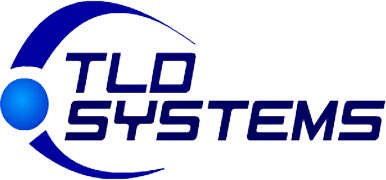- Helping you with HIPAA Security Solutions.
Medical Coding
Coding
Injection Denials
“I have been getting denials from BCBS, First Care, Aetna, and UHC on claims billed out with diagnosis codes M72.2, M71.571, M71.572, M77.31, and M77.32. Has anyone else had this problem lately? The NDC number and the description are on the claim. The claim is going out as follows: CPT 99213 25, CPT 20550 RT, CPT 20550 LT, J0702 x 2 units, J1030 x 2 units.”
Read More
Coding
Plantar Keratosis Combination
“Is the debridement of a plantar keratosis (CPT 11055) at the first metatarsal head considered bundled with nail debridement (CPT 11720)?”
Read More
Coding
Cigna and Modifier 25
“I just received a letter from Cigna insurance. As of August 13, 2022, they will require the submission of office notes with claims submitted with Evaluation and Management/E and M codes (ie. 99212, CPT 99213, CPT 99214) appended by modifier -25 when a minor procedure is also billed the same day by the same physician. The E/M will be denied if documentation is not received. The claim can be sent electronically with attachment indicator and notes should be faxed. Is this happening with other insurance companies? The amount of paperwork for a small office is crazy and along with continued decreasing reimbursements, higher prices for supplies, shortages, etc. The insurance companies are making greater profits than ever. The insurance premiums have increased and out-of-pocket patient billing has become more significant. The system is not right. What can we do? How do we fight back? Please don’t say take cash rather than insurance, it’s not practical in many circumstances. Any thoughts?”
Read More
Coding
Matrixectomy Follow Up
“I have a patient who has Blue Cross insurance. He came in for a matrixectomy on February 8th and returned on February 15th for follow up. I billed CPT 99213 using M79.673 and T81.40XA for the follow up and the claim was denied. Is there another code or modifier that I should include?”
Read More
Coding
Wound Care Coding: Recurrent and Frequent Treatment
“I have a Medicare patient that has healed a neuropathic ulcer (L97.522, E11.62) at the plantar base of his 5th metatarsal. He needs paring of the hyperkeratotic tissue, frequently with hemorrhagic changes, every four weeks or he re-ulcerates at this location. Should this be coded as: CPT 11055 using a GY modifier every other visit? Debriding devitalized tissue CPT 97597 or am I evaluating and managing an ulcer CPT 9921X?”
Read More
Coding
Plantar Fascia Rupture
“What would be the best code or codes to represent an acute, ruptured plantar fascia?"
Read More
Coding
Injections Under Fluoro
“My partner prefers to inject the subtalar joint under fluoroscopy. What would be the best procedure code to bill for an injection of the subtalar joint and does the use of fluoroscopy change things?”
Read More
Coding
E/M Revisited
“For Medicare, it has been well established that debridement for callouses is not covered when class findings are not present. But what about that patient that complains of pain from a callus. If you evaluate the painful callus and manage the painful callus, would it not be appropriate to bill a low level E/M code? This patient does not want surgery but this is a recurring problem. Can the E/M be billed each time the patient is seen?”
Read More
Coding
Treatment of an Abrasion
“What procedure codes represent the treatment of an abrasion? Are we restricted to E/M codes?”
Read More
Coding
Application of an External Fixator
“I am part of a recovery audit from CMS for using a modifier 59. Cotiviti Healthcare has been hired by CMS to review my use of modifier 59. They stated that my operative report supports documented Charcot reconstruction and the use of application of external fixator (CPT 20692) but modifier 59 was inappropriately used since both procedures were performed at the same session. Should I have used a different modifier in this situation? Is application of an external fixator (CPT 20692) not considered a separate procedure if it is performed at the same session as other reconstruction procedures?"
Read More

